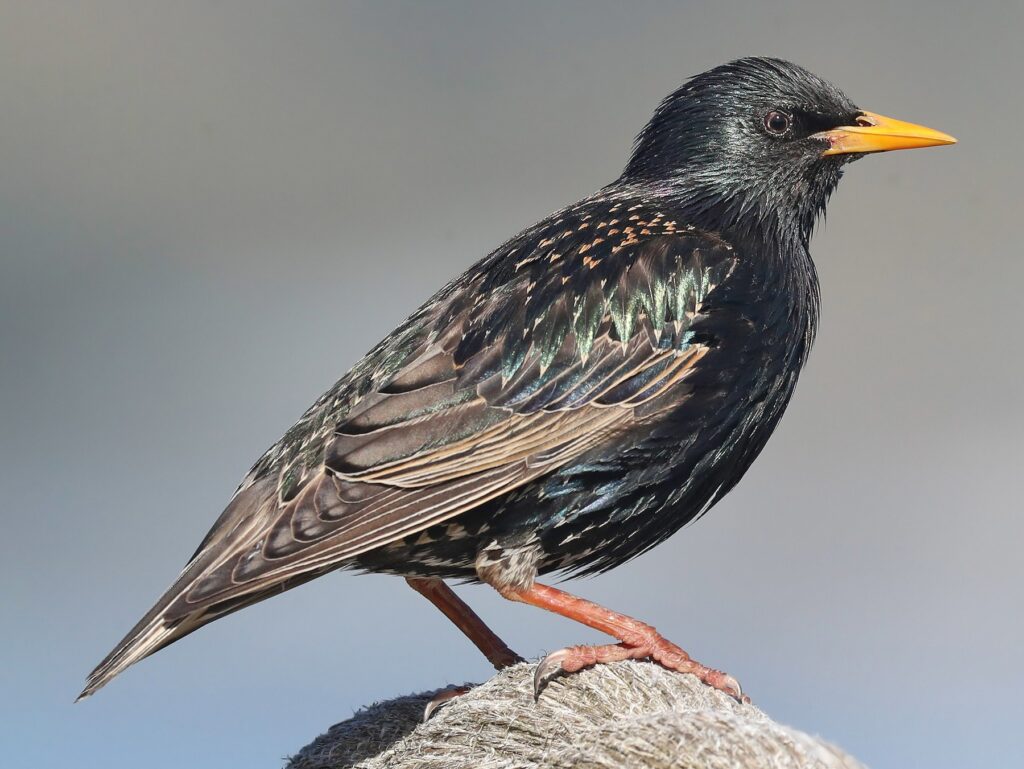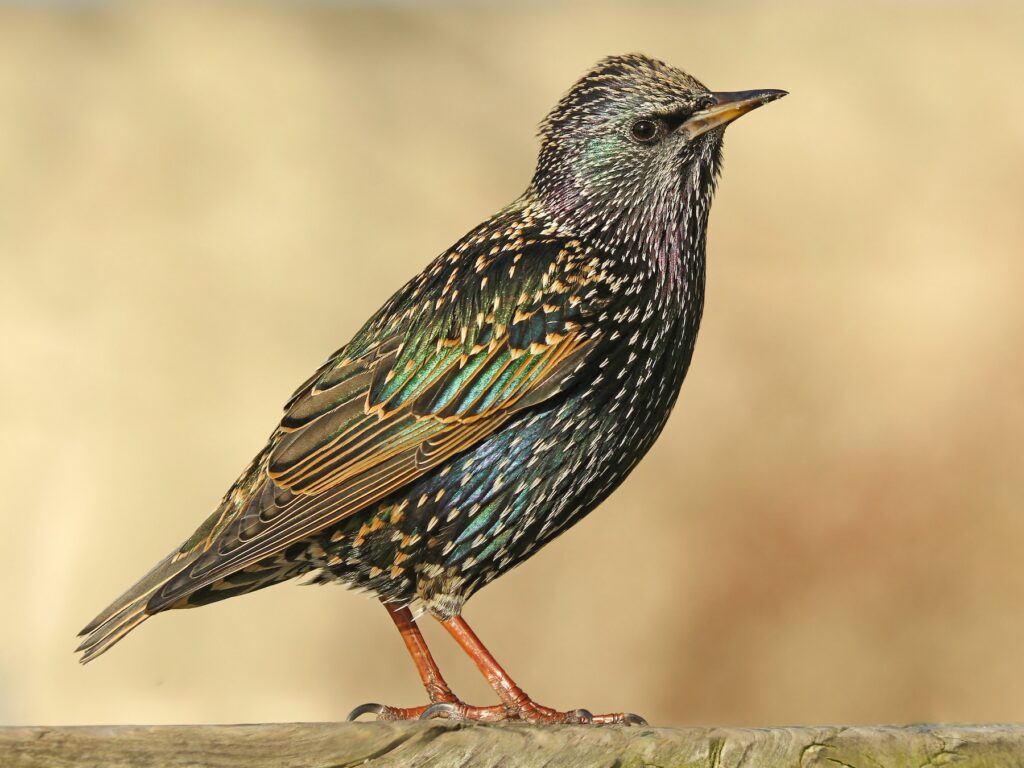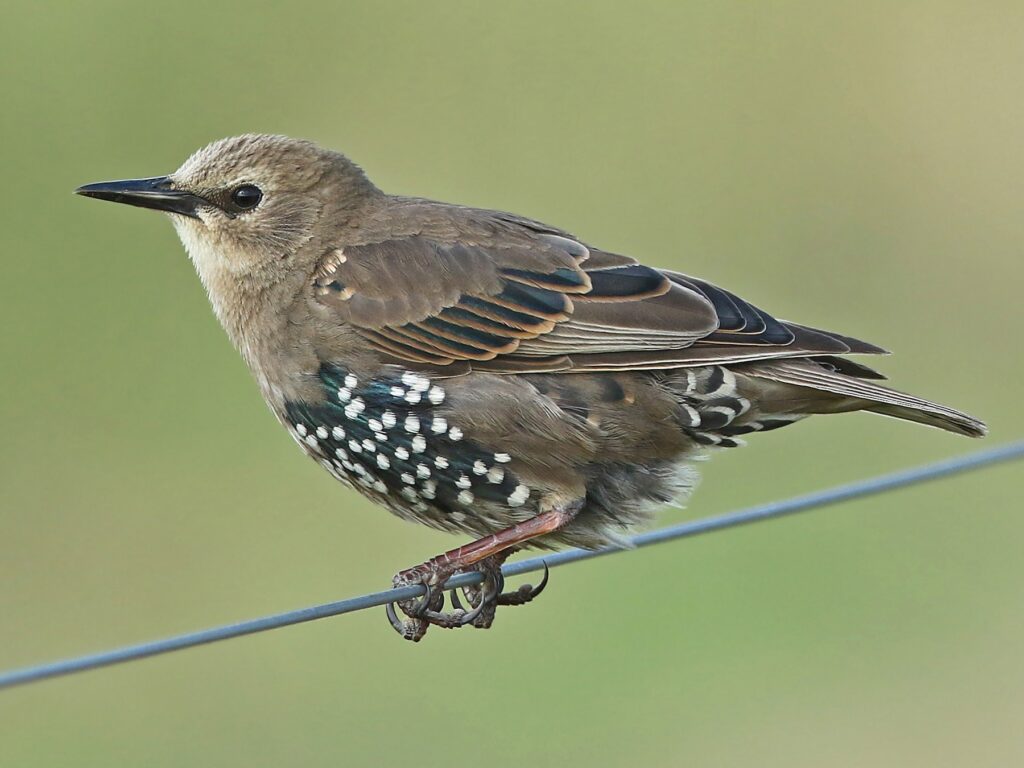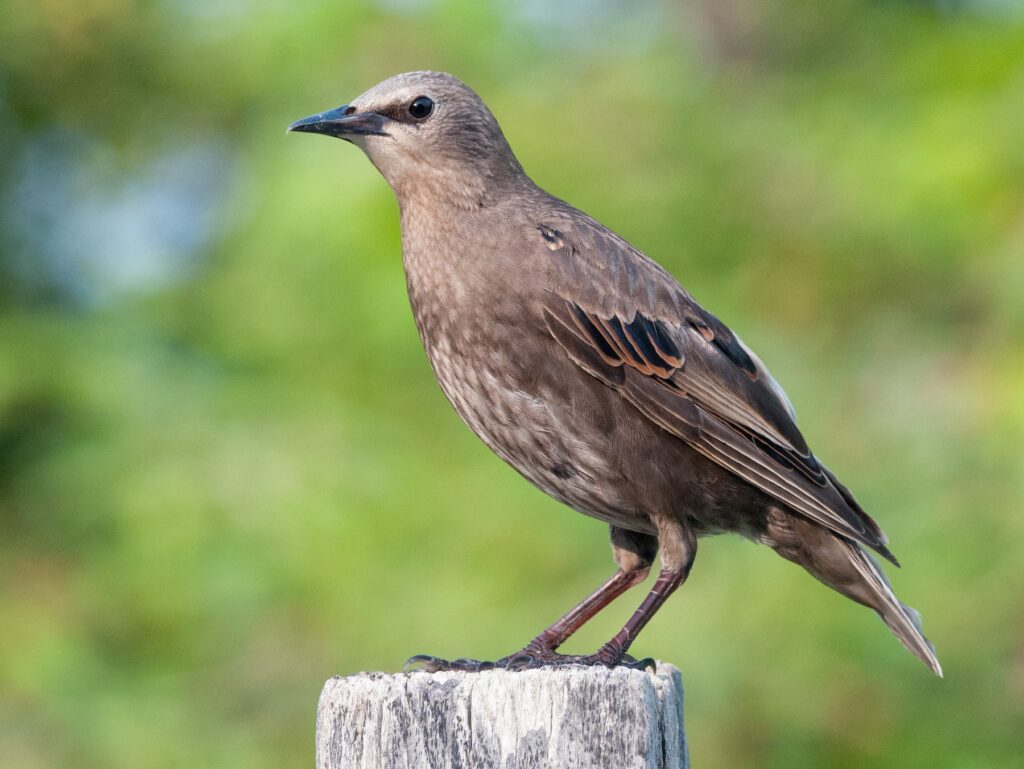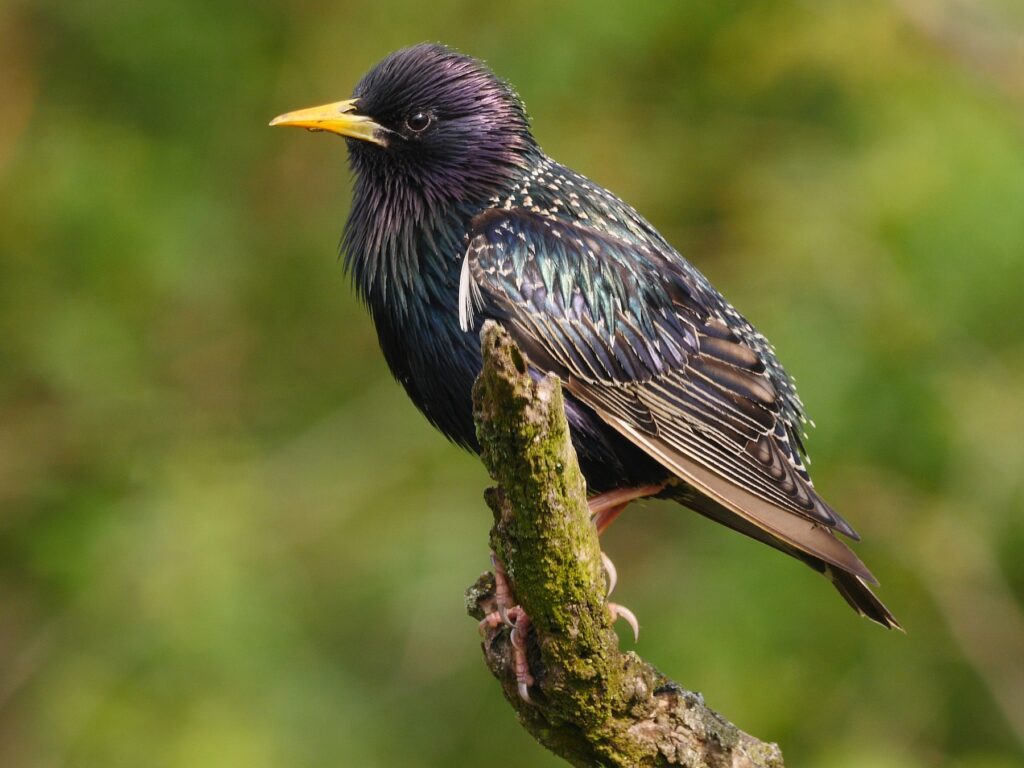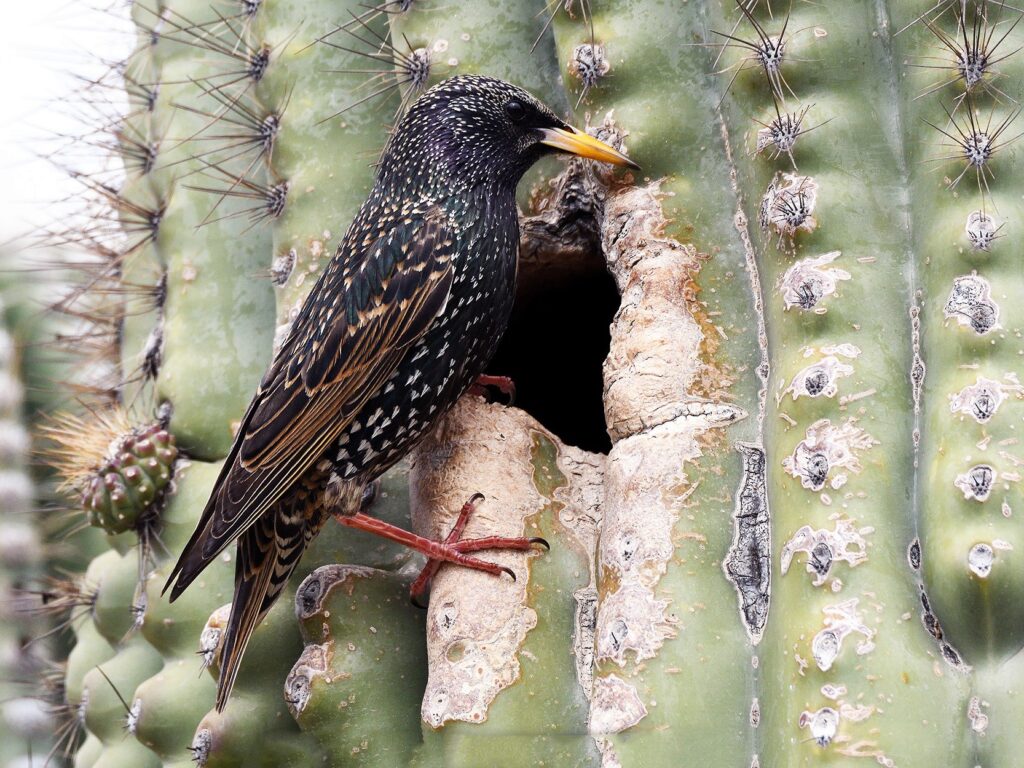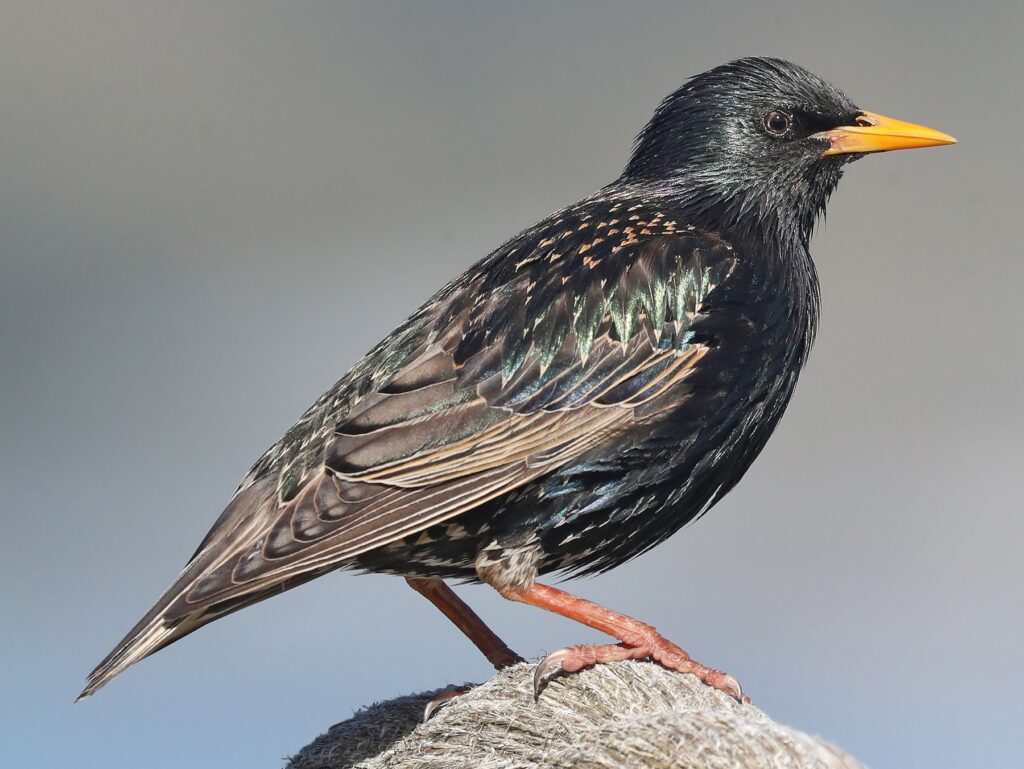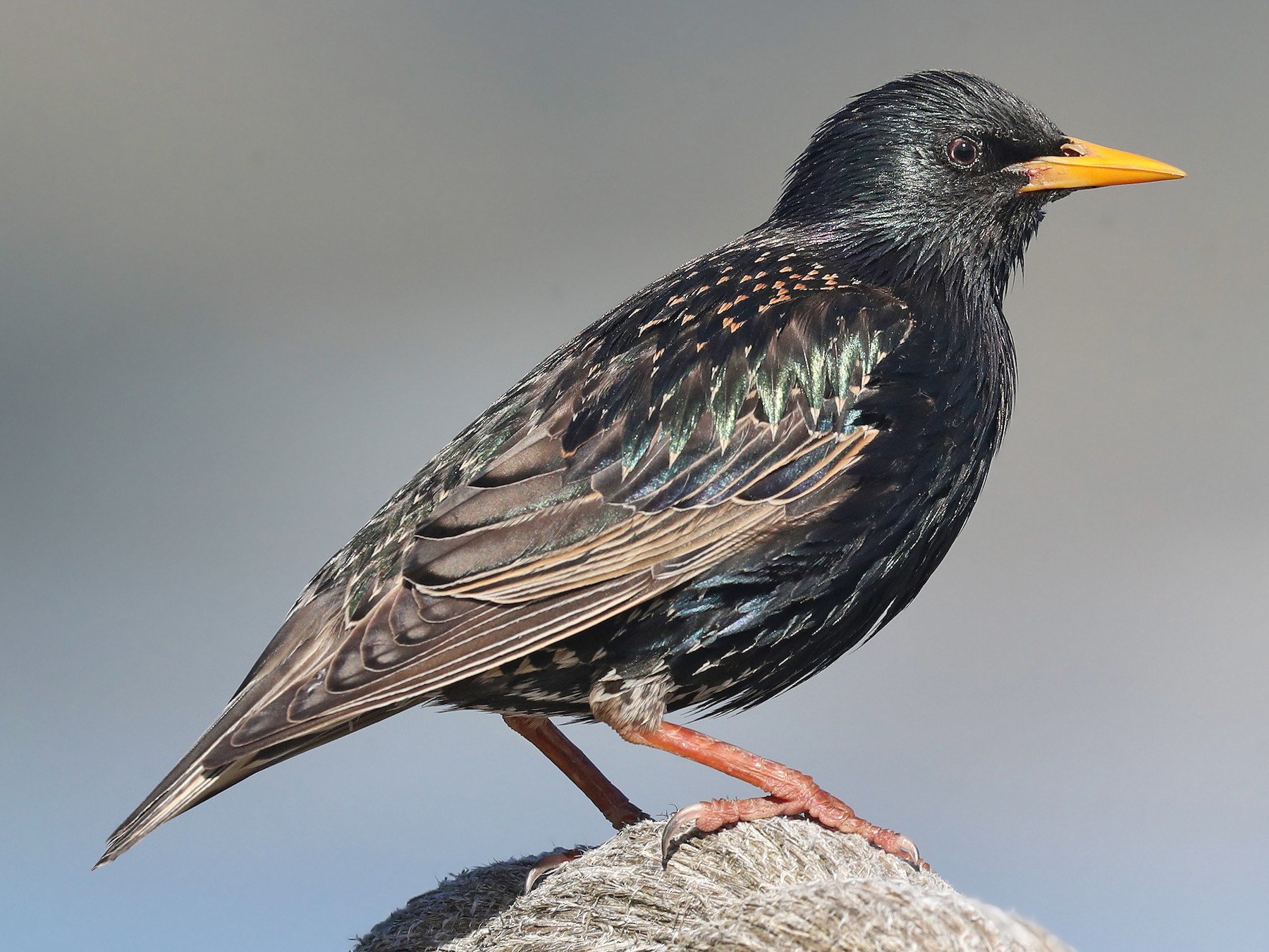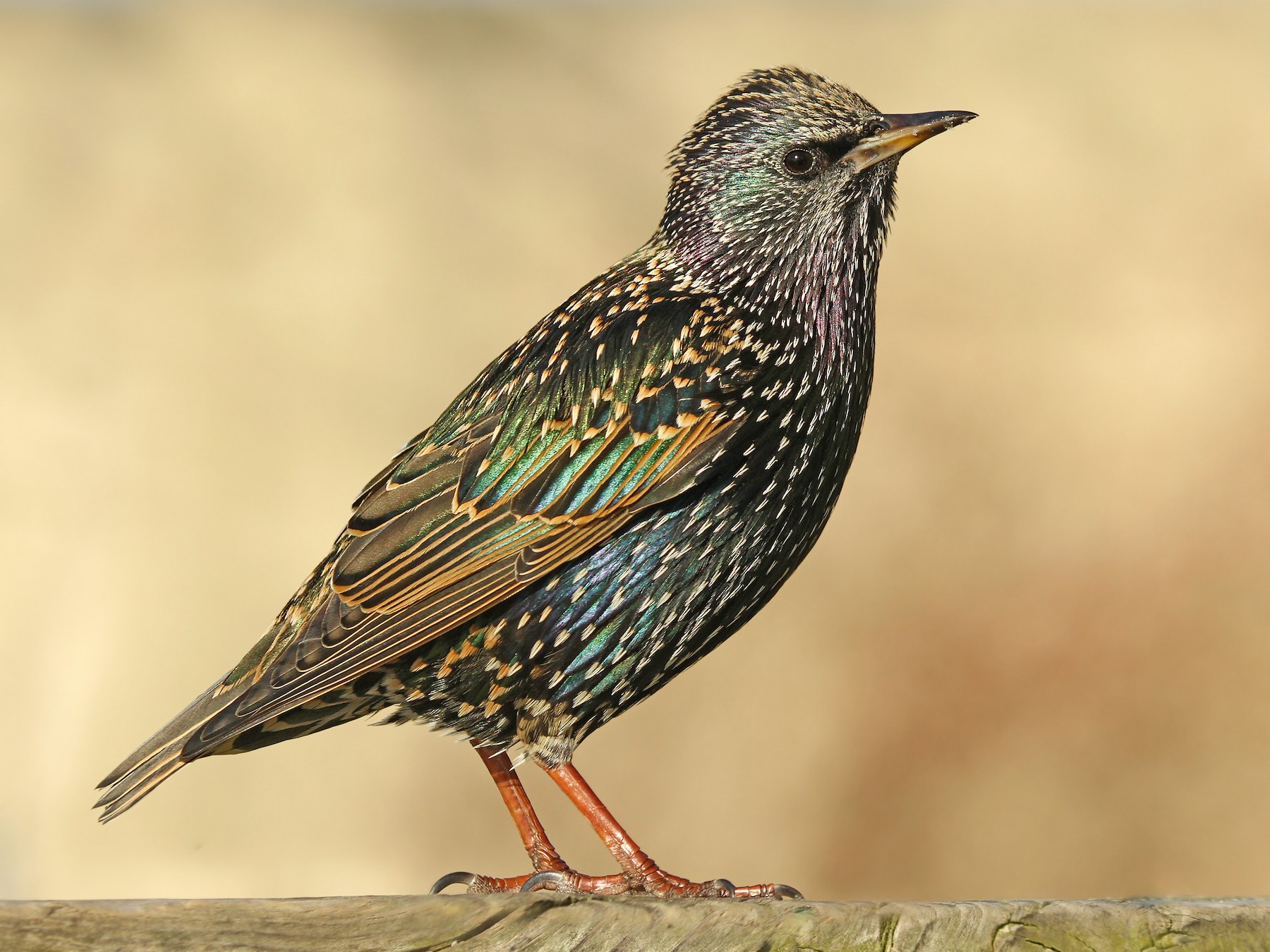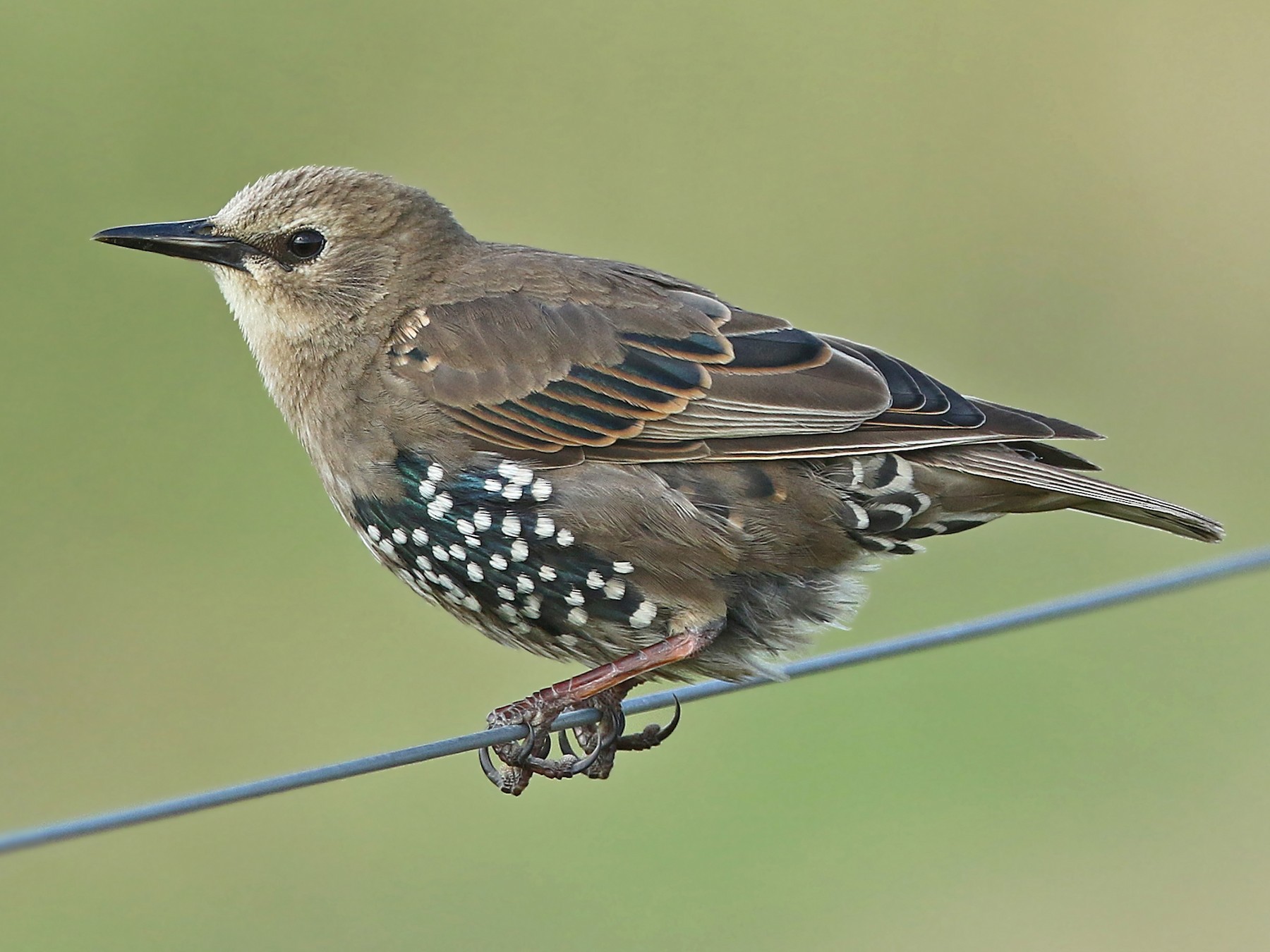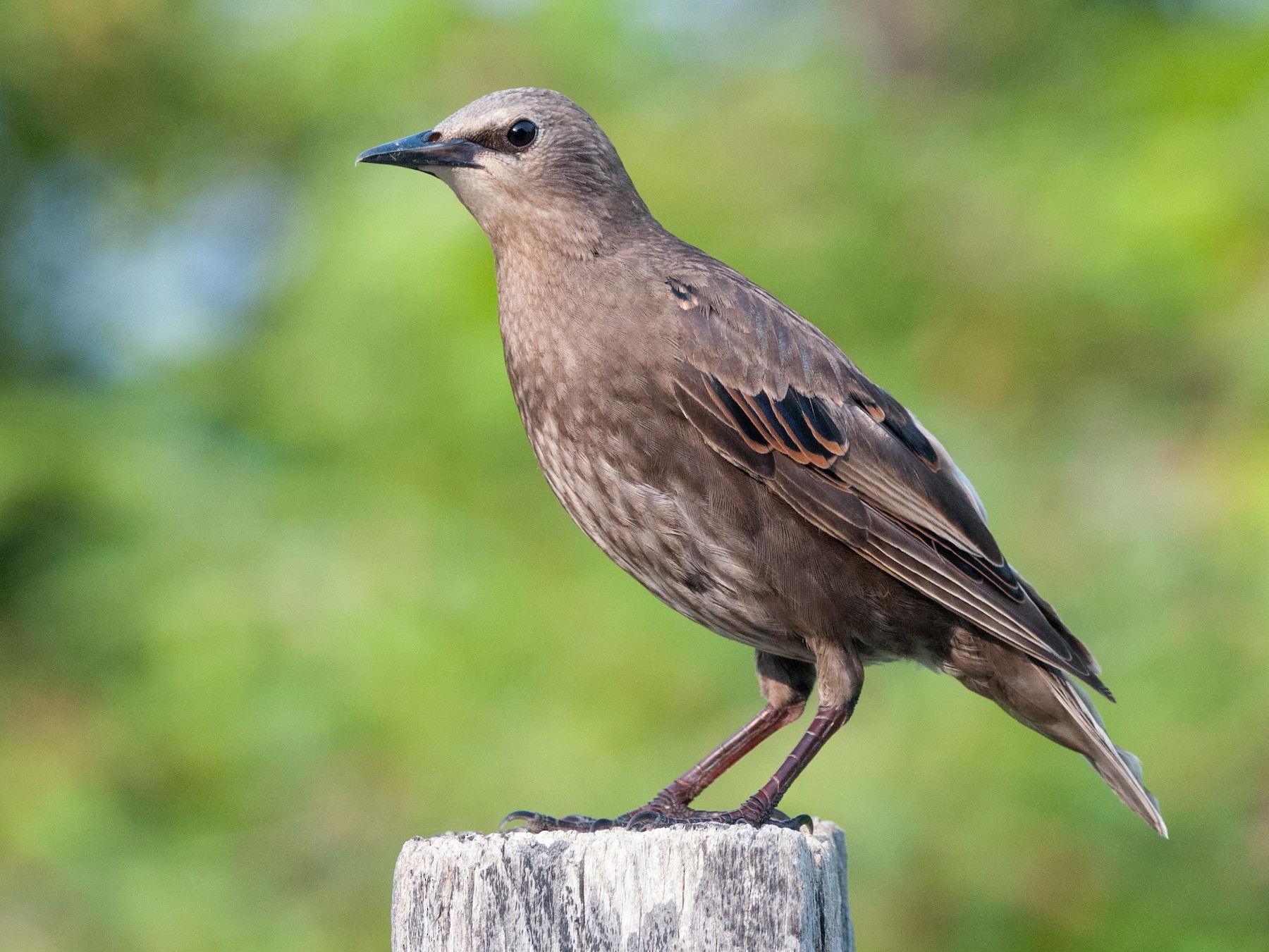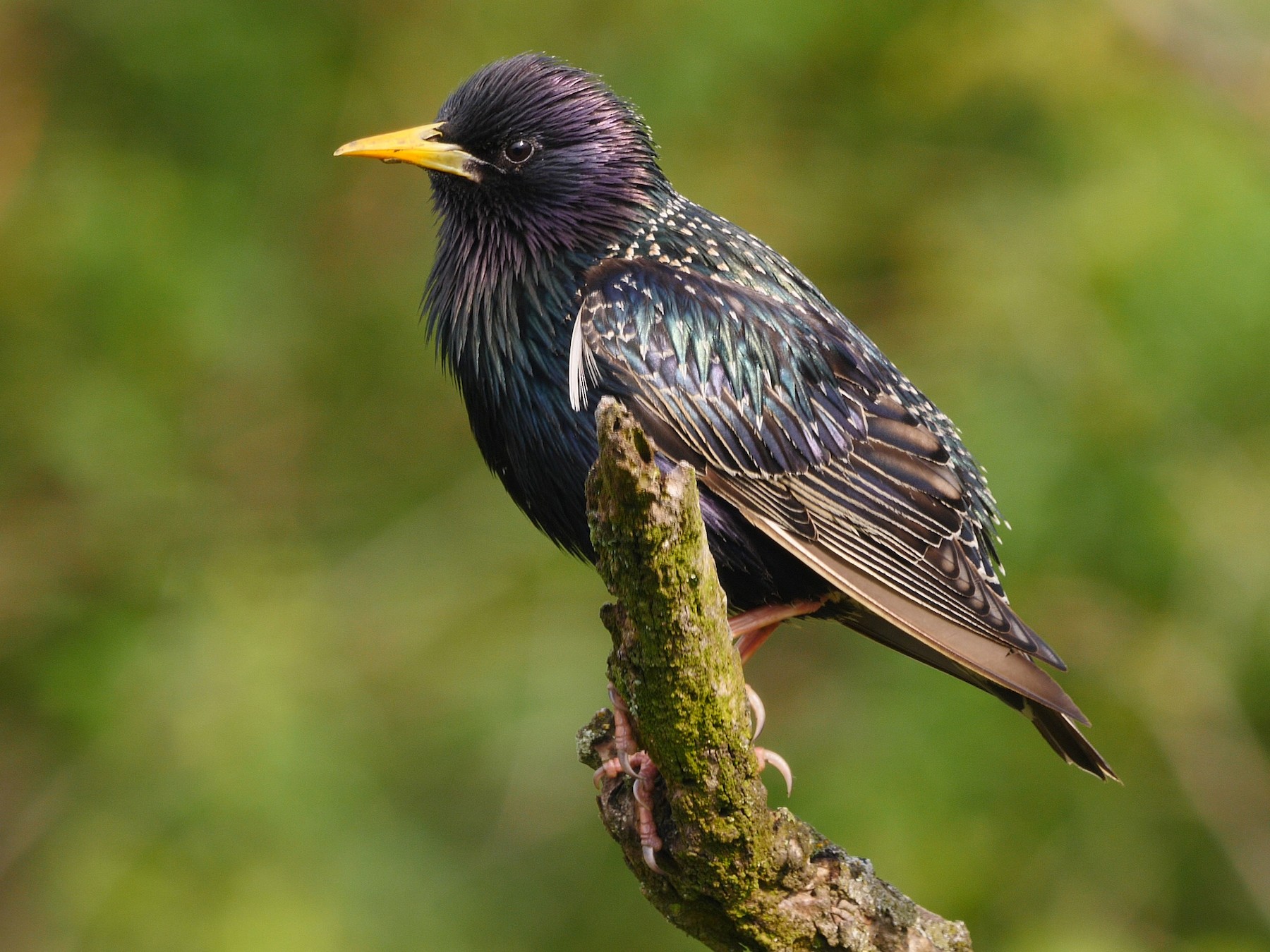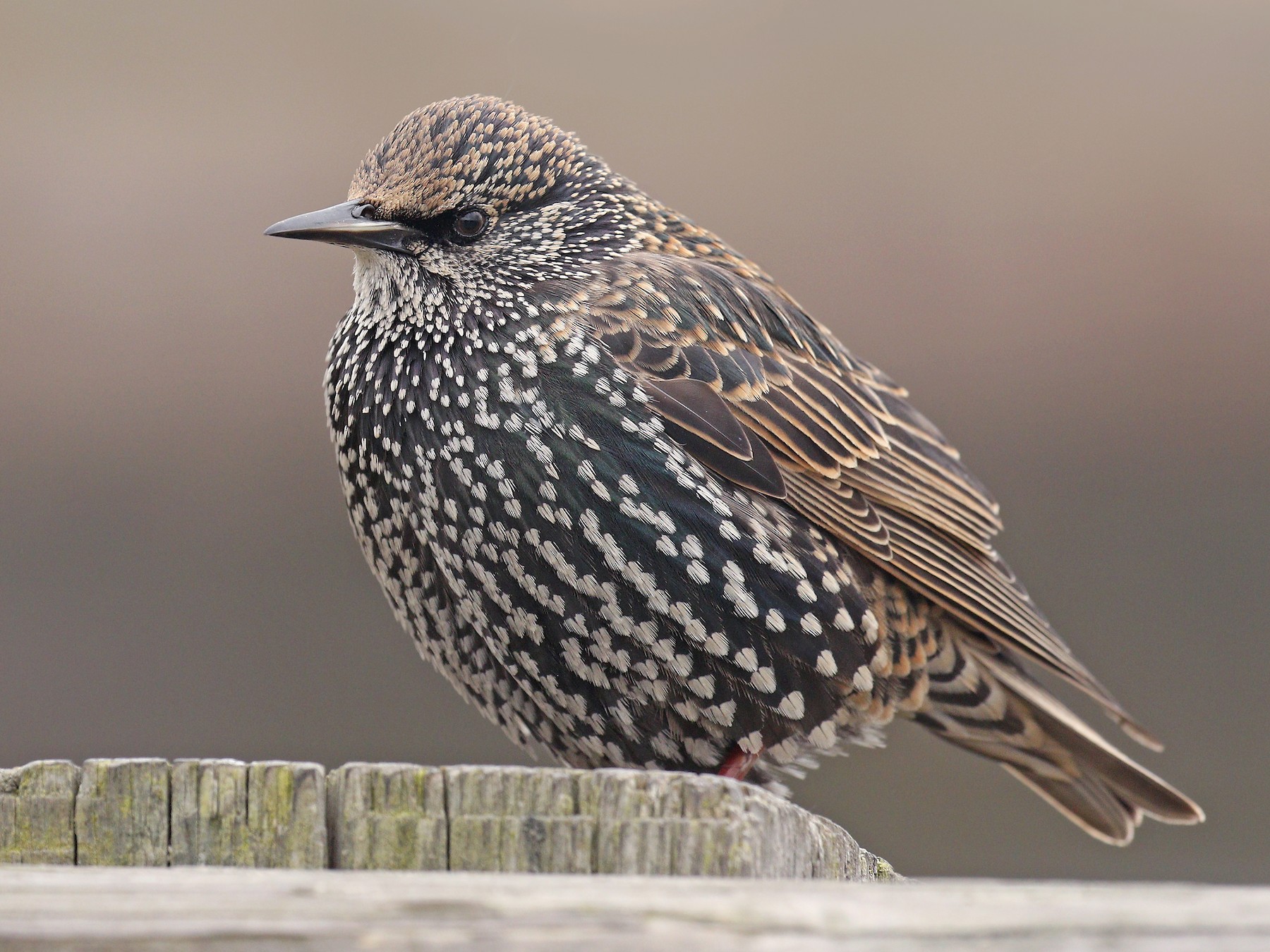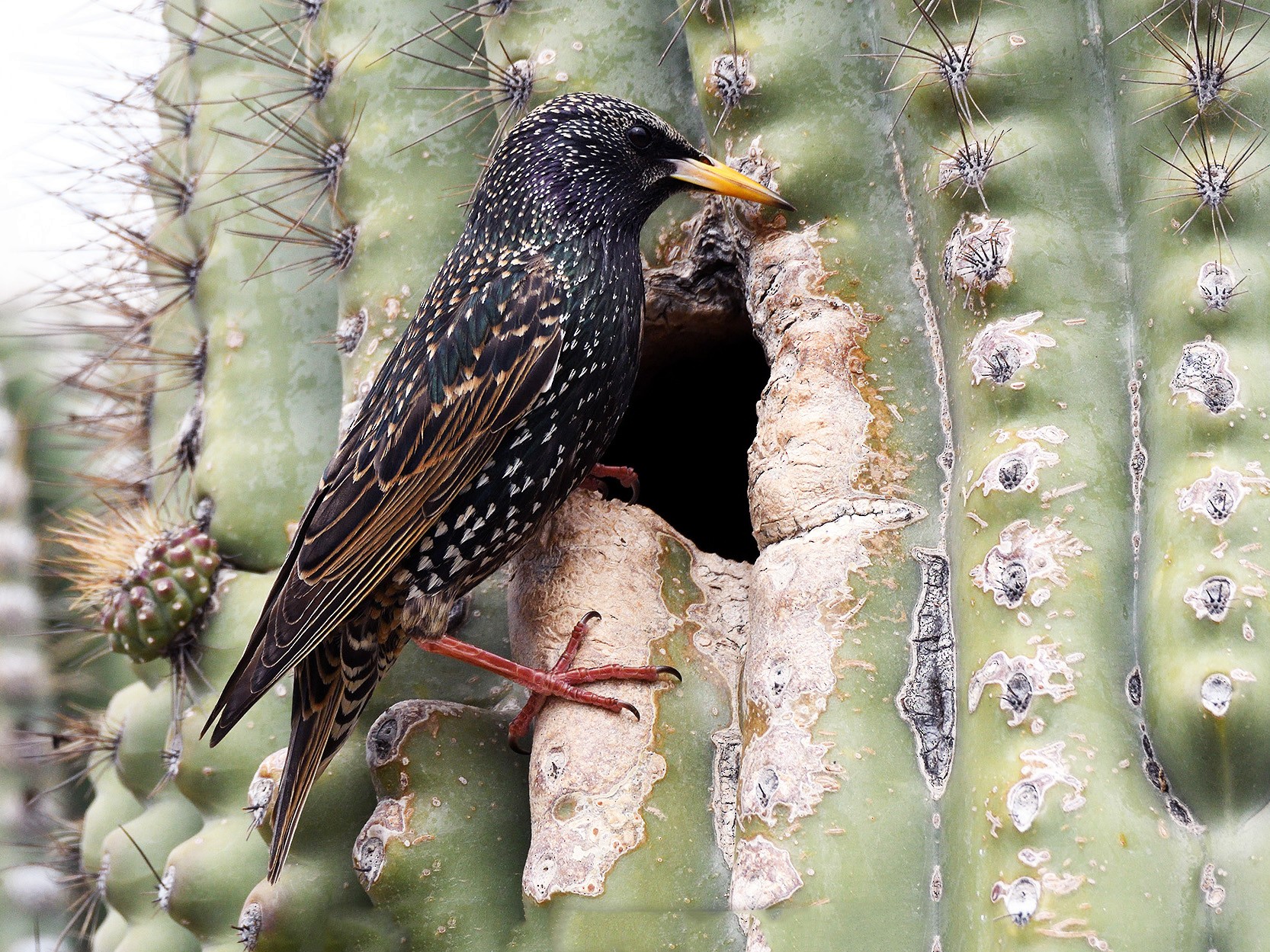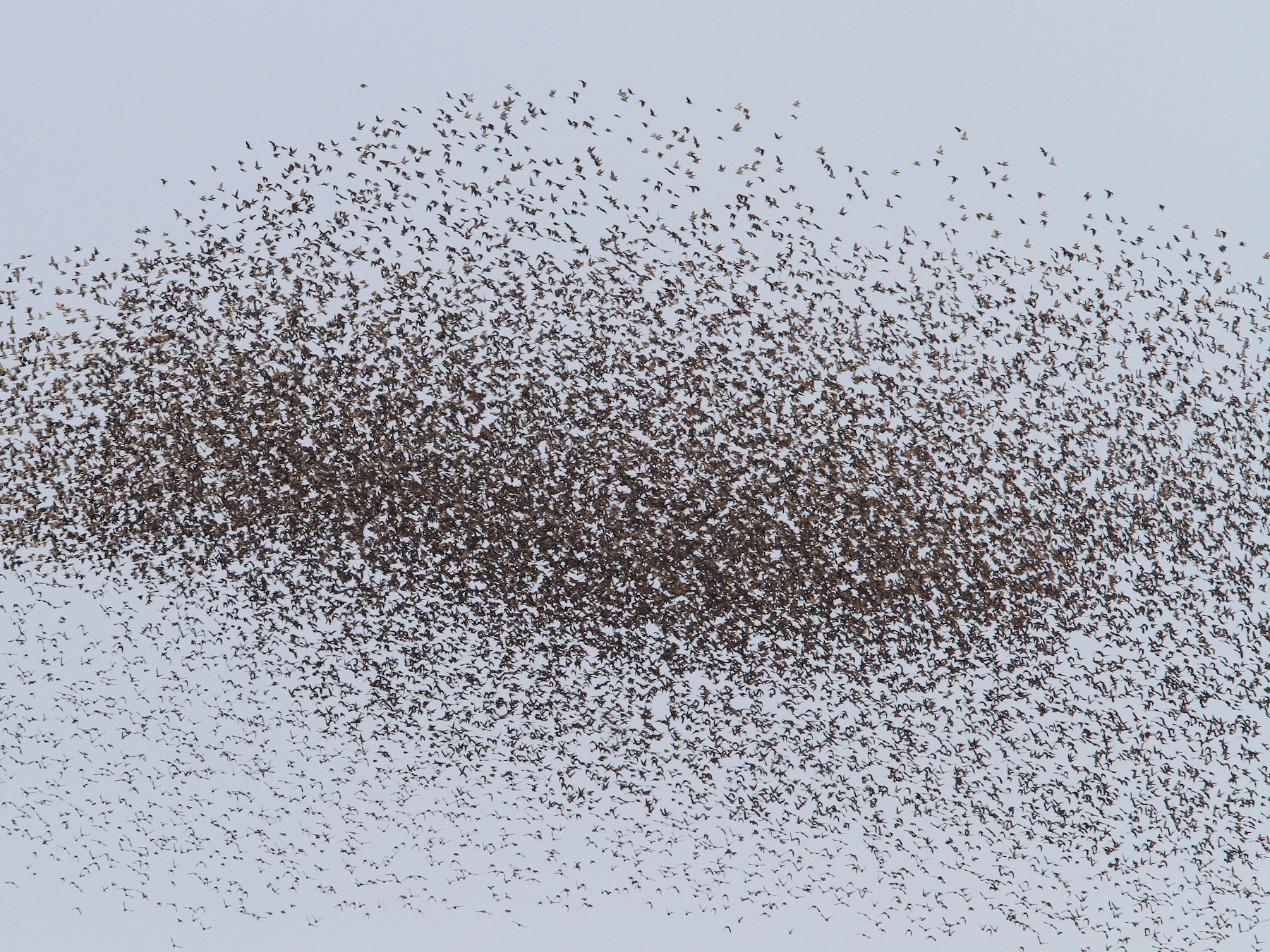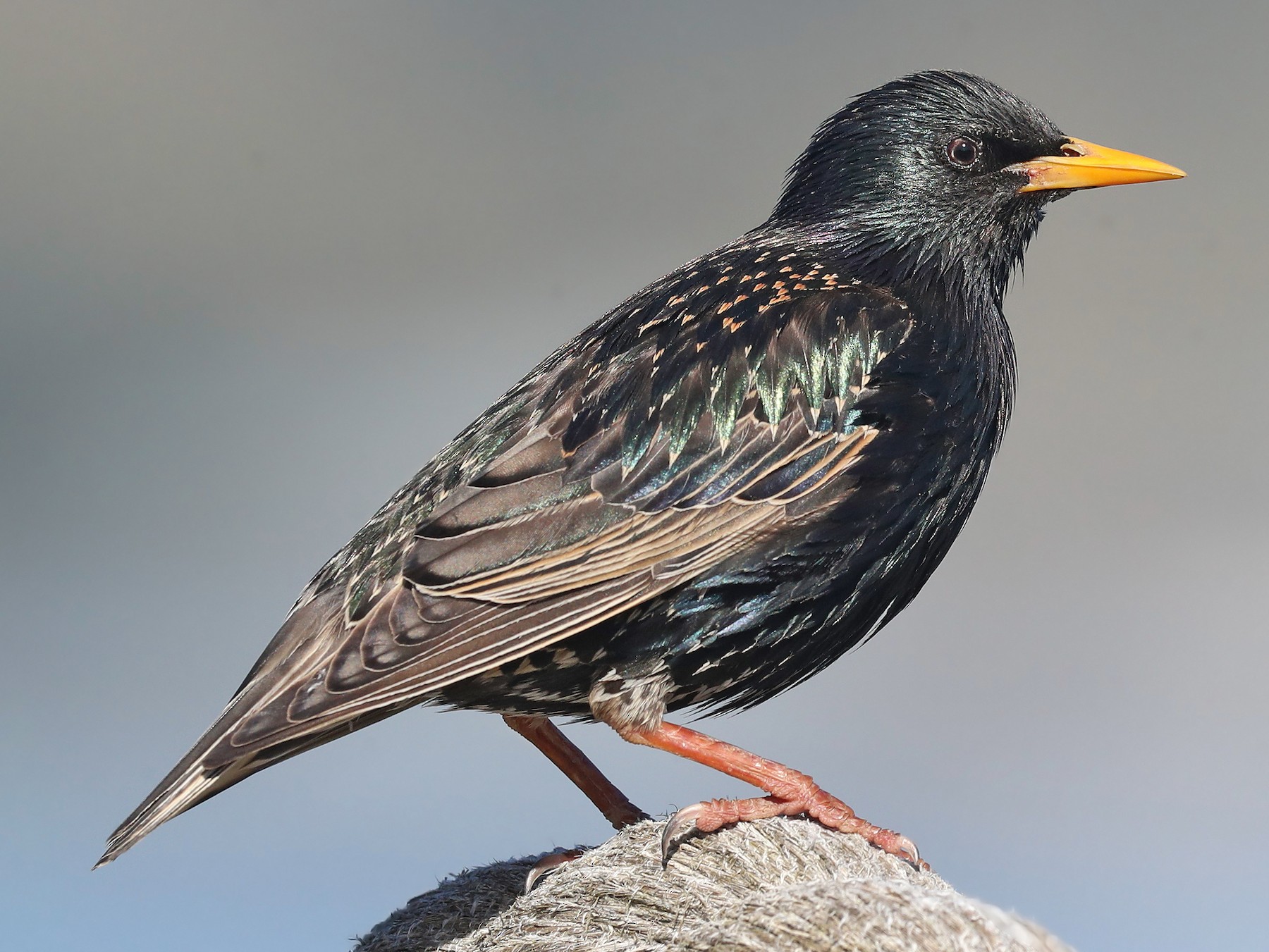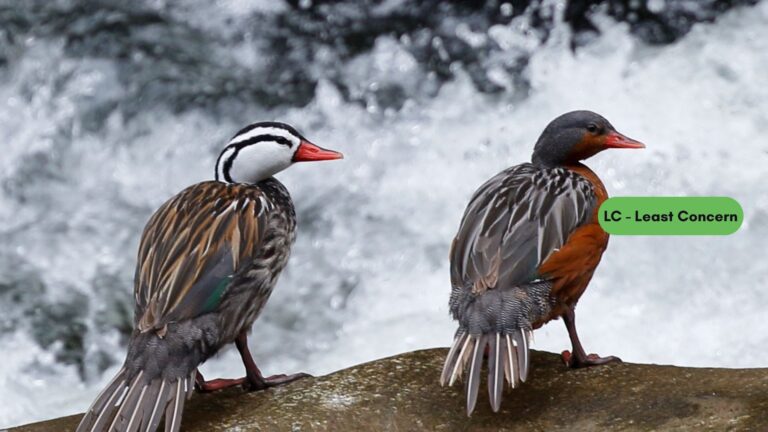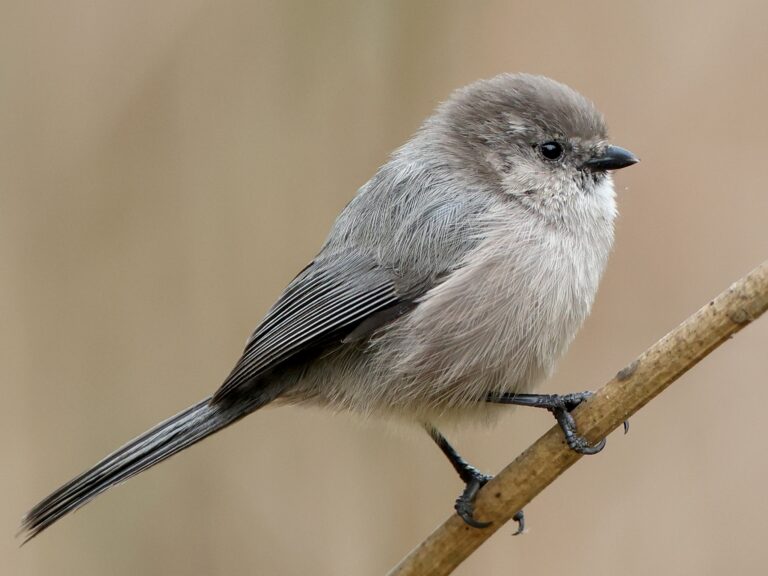European Starling: The Captivating Avian Explorer of Urban Landscapes
The European starling is a fascinating bird that has become a well-known species in many parts of the world, especially in North America. These birds are often recognized for their unique nesting habits and social behavior, making them a topic of interest for wildlife enthusiasts.
Their adaptability allows them to thrive in a variety of environments, from urban areas to farmlands. This showcases their resilience and resourcefulness. Starlings are omnivorous and have a diverse diet that includes insects, fruits, and seeds.
Their vocalizations are particularly notable, as they can mimic sounds from their surroundings, adding to their charm. While many appreciate their beauty and intelligence, they are also recognized as an invasive species. This raises concerns about their impact on native birds and ecosystems.
Key Takeaways
- European starlings adapt well to various habitats.
- They have a diverse diet and unique vocal abilities.
- Their invasive status impacts local ecosystems.
Sign Up for Our Monthly Newsletter
Every month we send out our newsletter about interesting (and sometimes quirky) things happening in the world of birding. Give it a try!
Overview of the European Starling
The European starling is a fascinating bird known for its adaptability and striking appearance. Originating from Europe, this species has successfully established itself in various habitats worldwide. Key aspects of its physical traits, classification, and distribution will be discussed.
Physical Characteristics
European starlings are medium-sized birds, typically measuring about 8.5 to 9.1 inches in length. They possess short, pointed wings and a distinctive long, tapered tail. The plumage is iridescent green and purple, with a spotted appearance during the breeding season.
Their beak is long and slender, turning a bright yellow in the spring, which aids in attracting mates. They have strong legs and feet, allowing them to forage effectively for food. The eyes are dark and round, giving them a keen sense of sight. In winter, their feathers change, creating a more muted and less colorful appearance.
Taxonomy and Classification
The European starling belongs to the family Sturnidae. Its scientific name is Sturnus vulgaris. This species is part of the order Passeriformes, which includes many songbirds. Starlings are related to other birds in the Sturnidae family, which also includes various starlings and mynas.
The European starling was first described in the 18th century, and its classification has remained stable since then. It is essential for birdwatchers and researchers to understand these classifications for proper identification and study.
Distribution and Range
Originally native to Europe and parts of Asia, the European starling was introduced to North America in the 1890s. Since then, it has expanded its range significantly. Today, it can be found across the continental United States, Canada, and even Alaska.
Starlings thrive in urban areas, farmlands, and forests. They prefer environments that offer open spaces for foraging and suitable nesting sites, such as tree cavities.
Their adaptability to different climates has made them successful invaders in many regions, contributing to their widespread presence. For more detailed information on their ecological impact, check out the review on the European starlings.
The European Starling adapts to various environments, making it a versatile bird.
Habitat and Diet
Preferred Habitats
Its diet is equally flexible, allowing it to thrive in diverse habitats and food sources. European Starlings prefer habitats that provide ample foraging opportunities and nesting sites.
They are commonly found in open areas like fields, parks, and urban settings.
- Urban Environments: Starlings thrive in cities where food waste is abundant.
- Agricultural Land: Farmlands are ideal for these birds due to the availability of grains and insects.
In natural settings, they often choose wooded areas or edges where they can find insects and fruits. Starlings form large flocks, which provide safety from predators and enhance their ability to locate food.
Diet and Feeding Habits
The diet of the European Starling mainly consists of insects, fruits, and grains. They are opportunistic feeders and can adapt based on availability.
- Insects: Earthworms, beetles, and caterpillars are significant during the breeding season.
- Fruits and Seeds: Starlings enjoy berries and seeds, especially in late summer and fall.
Their feeding habits change with the seasons. For example, they may rely more on agricultural fields for grains during winter months. European Starlings demonstrate interesting foraging behavior, often feeding in groups, which increases their efficiency in finding food. For more details on their diet and habitat use, one can refer to studies on their foraging behavior and habitat.
Breeding and Nesting Behavior
European Starlings are unique in their breeding and nesting habits. They often seek out specific locations for nesting, and their reproductive behaviors are designed for success in various environments.
Cavity Nesting Habits
European Starlings are known as cavity nesters. They prefer to nest in locations like tree cavities, building eaves, and even birdhouses. This trait provides them with protection from predators and harsh weather.
These birds are quite competitive when it comes to choosing nesting sites. They often displace other cavity-nesting birds, such as woodpeckers, to take over their homes.
It’s important to note that starlings may use old nests or even empty boxes for nesting, which can affect local bird populations. Their adaptability to various nesting sites allows them to thrive in diverse environments.
Breeding Season and Reproduction
The breeding season for European Starlings typically begins in early spring. During this time, they engage in various courtship behaviors. Males often perform elaborate displays to attract females, including singing and showing off their feathers.
Once a pair forms, they may produce 3 to 7 eggs per clutch. The female usually lays eggs in a span of several days. After the eggs are laid, they are incubated for about 12 days before hatching.
After hatching, the young starlings are fed by both parents. They fledge from the nest about 21 days after hatching, making them relatively independent fairly quickly.
These breeding habits ensure that European Starlings can maintain healthy populations, despite competition with other species. More on this can be found in studies like this one on breeding biology.
Vocalizations and Communication
The European starling is known for its complex vocalizations and social communication. These birds use various sounds to convey messages, attract mates, and establish territory. Key aspects include their song characteristics and ability to mimic sounds.
Song Characteristics
European starlings produce a diverse range of songs that are intricate and varied. Their songs consist of a series of whistles, clicks, and trills, creating a complex pattern. These vocalizations are important for attracting mates and defending territories.
Males typically sing during the breeding season, using their songs to showcase their fitness to potential partners. The quality and variety of their song can influence female choice. Research has shown that the complexity of a starling’s song can reflect its health and genetics.
Mimicry and Sounds
In addition to their own songs, European starlings are famous for their mimicry skills. They can imitate the calls of other birds, animals, and even mechanical sounds from their environment. This mimicry may serve various social functions, from communication to a strategy for avoiding predators.
Starlings learn these sounds through social interactions and environmental exposure. Their ability to mimic enhances their adaptability and may help in establishing social bonds within flocks.
Studies show that these interactions play a crucial role in their communication patterns, especially in dense habitats where sounds can overlap.
Invasive Status and Impact
The European Starling has established a significant presence in North America since its introduction. Its invasive status is underscored by its effects on native species and various ecological systems. Understanding these impacts is crucial for managing wildlife and maintaining biodiversity.
Introduction to North America
The European Starling was introduced to North America in the 19th century. Initially brought over for ornamental purposes and to establish species from Shakespeare’s works, it quickly adapted to a variety of environments. Today, they are widespread, thriving in urban areas, farmlands, and natural habitats across the continent. Their rapid population growth has raised concerns among ecologists and wildlife managers.
Effects on Native Species
European Starlings compete aggressively with native bird species for nesting sites and food resources. They often invade cavities preferred by native birds, such as woodpeckers and other cavity-nesters.
Research indicates that starlings can reduce native bird populations by displacing them or competing for limited resources. This shifts the balance in local ecosystems, threatening biodiversity.
Additionally, studies suggest that as starling populations grow, the survivability of native birds diminishes, particularly in areas with dense starling populations. The long-term effects on native species remain a topic of study in conservation circles.
Ecological and Agricultural Impacts
The presence of starlings in North America has significant ecological consequences. They are known to disrupt local ecosystems through competition and aggression. Their foraging habits can lead to the depletion of insect populations. This impacts the food web.
In addition to ecological effects, starlings pose challenges to agriculture. They are known to feed on crops, including fruit, grains, and seeds. This feeding behavior leads to substantial economic losses. Farmers often struggle with managing starling populations to protect their yields.
Starlings also contribute to the spread of diseases, which can affect livestock and wildlife. Their role as carriers of parasites and pathogens further complicates their management in agricultural settings.
Frequently Asked Questions
The European Starling has unique characteristics, environmental impacts, and calls that many find interesting. This section addresses common queries regarding its identification, habitats, and more.
What characteristics distinguish the European Starling from similar birds?
The European Starling (Sturnus vulgaris) is known for its iridescent black feathers, which show a green and purple sheen in the sunlight. Its pointed wings and short tail set it apart from other birds like the blackbird or sparrow.
Starlings also have a distinct yellow bill, especially during the breeding season.
What are the environmental impacts of European Starlings in non-native regions?
In non-native regions, European Starlings can have significant environmental impacts. They compete with native birds for food and nesting sites.
Their feeding habits can also damage crops and lead to economic losses for farmers. In some areas, they contribute to the decline of local bird populations.
How can one identify a female European Starling compared to a male?
Female European Starlings are generally similar in appearance to males but may have slightly duller feathers. The male typically has a brighter and more vibrant plumage, especially during the breeding season.
Both sexes share the same body shape and size, making identification by physical traits alone somewhat challenging.
What does the European Starling’s call sound like?
The European Starling has a varied and complex call that includes whistles, clicks, and squawks. They are known for their ability to mimic other birds and sounds from their surroundings.
Their vocalizations can vary greatly depending on their environment and the situation.
Which habitats are preferred by European Starlings?
European Starlings prefer open areas, including urban environments, farmland, and grasslands. They are adaptable birds that thrive in various habitats, as long as food sources are available.
They often nest in tree cavities, buildings, and other sheltered locations.
How big do European Starlings typically grow?
European Starlings typically grow to about 7.9 to 9.1 inches in length. They have a wingspan of around 12 to 16 inches. Their weight can vary from 2.1 to 3.4 ounces.


